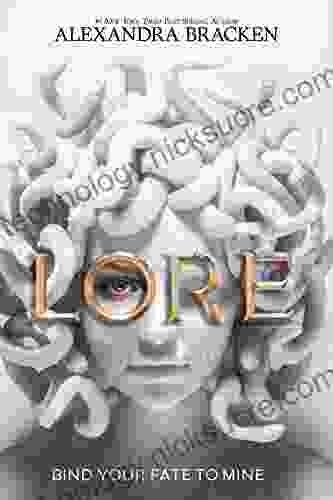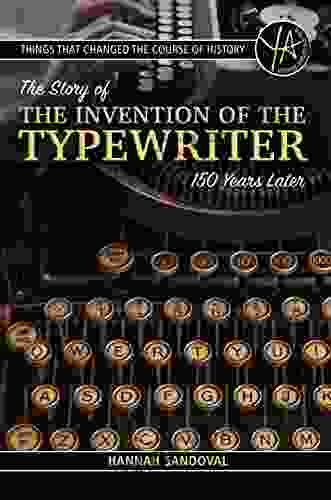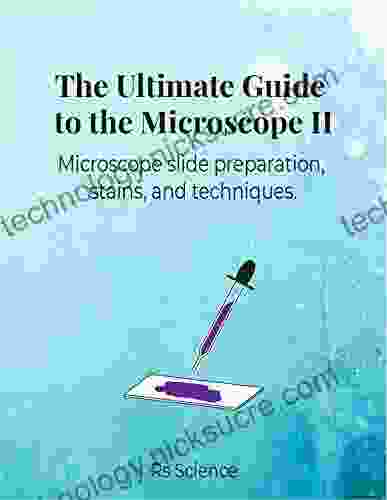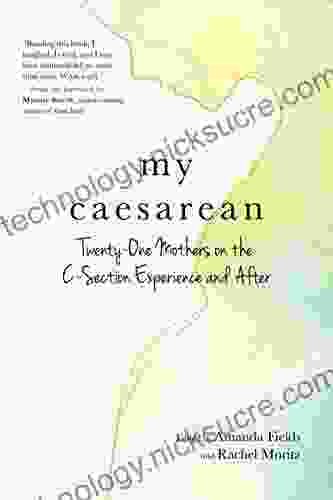The Ultimate Guide to the Microscope II: Unveiling the Microcosm

The microscope, a scientific instrument that has revolutionized our understanding of the world, is a must-have tool for students, scientists, and hobbyists alike. Whether you're exploring the intricate details of a plant cell or studying the behavior of microscopic organisms, the microscope grants us an unparalleled glimpse into the microcosm. This comprehensive guide delves into the fascinating world of microscopy, providing insights into the different types of microscopes, their components, techniques, and applications. By the end of this guide, you'll be equipped with the knowledge and skills necessary to unlock the secrets of the unseen world.
4.6 out of 5
| Language | : | English |
| File size | : | 3362 KB |
| Screen Reader | : | Supported |
| Print length | : | 11 pages |
| Lending | : | Enabled |
Types of Microscopes
The world of microscopy offers a diverse range of microscopes, each designed for specific purposes and magnifications. Here are some of the most common types:
- Compound Microscope: This is the most common type of microscope found in schools and laboratories. It uses two sets of lenses (objective and eyepiece) to achieve high magnifications, making it ideal for observing small cells and microscopic structures.
- Stereo Microscope: Also known as a dissecting microscope, it provides a three-dimensional view of the specimen, allowing users to examine the surface details and depth of an object without dissecting it.
- Electron Microscope: Electron microscopes use a beam of electrons instead of light to create images, enabling magnifications thousands of times higher than compound microscopes. They are primarily used for ultra-high resolution imaging of atoms, viruses, and other subcellular structures.
- Scanning Probe Microscope: These microscopes use a sharp probe to scan the surface of a specimen, providing detailed images of surface topography. They are often used in materials science and nanoscale research.
Microscope Components
Microscopes are composed of several key components that work together to create magnified images. These include:
- Eyepiece: The eyepiece, or ocular lens, is the lens that you look through to view the specimen. It typically has a magnification of 10x or 15x.
- Objective Lenses: Objective lenses are mounted on the nosepiece of the microscope and provide the primary magnification. They are usually interchangeable to allow for different magnifications.
- Stage: The stage is the platform where the specimen is placed for viewing. It can be moved up and down, as well as side-to-side, to focus the specimen and navigate it.
- Condenser: The condenser concentrates light onto the specimen, improving illumination and contrast.
- Diaphragm: The diaphragm controls the amount of light that reaches the specimen, allowing adjustments to optimize brightness.
Microscope Techniques
Microscopy involves a range of techniques to prepare, observe, and analyze specimens. Here are some common techniques:
- Brightfield Microscopy: This is the simplest technique, where light passes through the specimen and directly to the eyepiece, creating a brightfield image of the specimen.
- Darkfield Microscopy: Darkfield microscopy uses oblique lighting to create a dark background, making transparent specimens appear brighter and easier to observe.
- Phase Contrast Microscopy: This technique utilizes differences in the refractive index of the specimen to create images that highlight subtle details and structures.
- Fluorescence Microscopy: Fluorescence microscopy involves using fluorescent dyes that emit light when exposed to specific wavelengths, allowing for visualization of specific structures or molecules within the specimen.
Applications of Microscopy
Microscopy finds applications in a vast array of fields, including:
- Biology: Microscopy is essential for the study of cells, tissues, and microorganisms, helping biologists understand the structure and function of living organisms.
- Medicine: Microscopes are used to diagnose and treat diseases by examining blood samples, tissue biopsies, and other medical specimens.
- Materials Science: Microscopy plays a crucial role in materials characterization, failure analysis, and the development of new materials.
- Forensic Science: Microscopes are used to examine evidence, such as fingerprints, fibers, and DNA, in criminal investigations.
- Education: Microscopes are indispensable tools in science education, allowing students to explore the microcosm and deepen their understanding of biological and physical processes.
History of the Microscope
The history of the microscope is a fascinating journey of scientific innovation and discovery. Here are some key milestones:
- 16th Century: Zacharias Janssen and Hans Lippershey are credited with inventing the first compound microscope.
- 17th Century: Antonie van Leeuwenhoek made significant contributions to microscopy, discovering microorganisms and revolutionizing our understanding of the microcosm.
- 19th Century: Ernst Abbe developed the theory of image formation in microscopes, leading to advancements in lens design and microscopy techniques.
- 20th Century: The invention of the electron microscope by Ernst Ruska and Max Knoll opened up a new era of ultra-high resolution microscopy.
The microscope has been an indispensable tool in scientific discovery and technological advancements, unraveling the mysteries of the microcosm that were once hidden from our view. This guide has provided a comprehensive overview of the different types of microscopes, their components, techniques, and applications, equipping you with the knowledge and skills necessary to embark on your own microscopic explorations. Whether you're a student, a scientist, or simply curious about the hidden world around you, the microscope is your gateway to the wonders of the unseen.
4.6 out of 5
| Language | : | English |
| File size | : | 3362 KB |
| Screen Reader | : | Supported |
| Print length | : | 11 pages |
| Lending | : | Enabled |
Do you want to contribute by writing guest posts on this blog?
Please contact us and send us a resume of previous articles that you have written.
 Fiction
Fiction Non Fiction
Non Fiction Romance
Romance Mystery
Mystery Thriller
Thriller SciFi
SciFi Fantasy
Fantasy Horror
Horror Biography
Biography Selfhelp
Selfhelp Business
Business History
History Classics
Classics Poetry
Poetry Childrens
Childrens Young Adult
Young Adult Educational
Educational Cooking
Cooking Travel
Travel Lifestyle
Lifestyle Spirituality
Spirituality Health
Health Fitness
Fitness Technology
Technology Science
Science Arts
Arts Crafts
Crafts DIY
DIY Gardening
Gardening Petcare
Petcare Jeff Galloway
Jeff Galloway Olivia Wildenstein
Olivia Wildenstein Stephen K Hayes
Stephen K Hayes Stephen L Sass
Stephen L Sass Steve Bechtel
Steve Bechtel Genese Marie Sodikoff
Genese Marie Sodikoff Aubrey Sherman
Aubrey Sherman Roseanne A Brown
Roseanne A Brown Stanley Cohen
Stanley Cohen Milan Yerkovich
Milan Yerkovich Diana Hopkins
Diana Hopkins Kalynn Bayron
Kalynn Bayron Brent Herrick
Brent Herrick Larry Pardey
Larry Pardey Scott Whitlock
Scott Whitlock Kieran Mccarthy
Kieran Mccarthy Lisa Silverman
Lisa Silverman Phil Gaimon
Phil Gaimon Martin Baldridge
Martin Baldridge Jim Davidson
Jim Davidson Peter Galison
Peter Galison George E Vaillant
George E Vaillant Terry Marsh
Terry Marsh Pamela K Lamb
Pamela K Lamb Lonely Planet
Lonely Planet Vanessa Van Edwards
Vanessa Van Edwards Cary Nemeroff
Cary Nemeroff Gf Denehy
Gf Denehy Dan Jacob
Dan Jacob Peter Maguire
Peter Maguire Michael Clary
Michael Clary Christie Cognevich
Christie Cognevich Linda Egenes
Linda Egenes Brett Cohen
Brett Cohen Tim Cahill
Tim Cahill Dipika Mukherjee
Dipika Mukherjee Georgiann Davis
Georgiann Davis Laura Eckert
Laura Eckert Russ Unger
Russ Unger Elizabeth White
Elizabeth White Ralph Vacchiano
Ralph Vacchiano Lara S Ormiston
Lara S Ormiston F T Lukens
F T Lukens Will Hart
Will Hart Amber Lia
Amber Lia Daniel L Everett
Daniel L Everett Duncan Wells
Duncan Wells Brad Borkan
Brad Borkan Willard A Palmer
Willard A Palmer Dr Yvonne S Thornton
Dr Yvonne S Thornton Alex Riley
Alex Riley Caren Cooper
Caren Cooper Anatoli Boukreev
Anatoli Boukreev Audra Fordin
Audra Fordin Howard Carter
Howard Carter J Richard Hackman
J Richard Hackman Lyn Kelley
Lyn Kelley Jennifer Boyle
Jennifer Boyle Anne Dachel
Anne Dachel Albert Ellis
Albert Ellis Jules Wake
Jules Wake Alexa Nicole Cucchiara
Alexa Nicole Cucchiara Mary Lynne Fernandez
Mary Lynne Fernandez Game Spark
Game Spark Jennifer Estep
Jennifer Estep David G Kleinbaum
David G Kleinbaum Stephen Wilbers
Stephen Wilbers Peter Ross
Peter Ross Michael Teitelbaum
Michael Teitelbaum Deborah L Davis
Deborah L Davis Erin Bowe
Erin Bowe Michael Steven
Michael Steven Heather Dale
Heather Dale Thomas Sowell
Thomas Sowell L R Trovillion
L R Trovillion Jennet Conant
Jennet Conant Marian Dewane
Marian Dewane Douglas D Scott
Douglas D Scott Chella Man
Chella Man Alex Guarnaschelli
Alex Guarnaschelli Stan Utley
Stan Utley David Shinar
David Shinar Cecil B Hartley
Cecil B Hartley Daniel Defoe
Daniel Defoe Soo Kim Abboud
Soo Kim Abboud Derrick Niederman
Derrick Niederman Rachael Ray
Rachael Ray Martha Sears
Martha Sears Scott Kelly
Scott Kelly Anna Post
Anna Post Alexander Meyer
Alexander Meyer Dan Purser Md
Dan Purser Md Jerry C Whitaker
Jerry C Whitaker Kathleen Mcmillan
Kathleen Mcmillan Tony Roig
Tony Roig Michele Filgate
Michele Filgate P J Agness
P J Agness Fridtjof Nansen
Fridtjof Nansen Gabriyell Sarom
Gabriyell Sarom Ari Mennander
Ari Mennander Greg Michaelson
Greg Michaelson Alex Polyakov
Alex Polyakov George Marshall
George Marshall Alexander Jones
Alexander Jones Theodore X O Connell
Theodore X O Connell Alicia Ranoldo
Alicia Ranoldo Angelo Tropea
Angelo Tropea Jenny Mackay
Jenny Mackay Don Bendell
Don Bendell Suzie Sheehy
Suzie Sheehy Sabine Hossenfelder
Sabine Hossenfelder Aleksandr Anufriyev
Aleksandr Anufriyev Brent Zwerneman
Brent Zwerneman Matt Johanson
Matt Johanson Nancy Marie Brown
Nancy Marie Brown Amy Newmark
Amy Newmark Alex Light
Alex Light Elena Zotova
Elena Zotova Alex Wade
Alex Wade S Kelley Harrell
S Kelley Harrell Dr Rebecca Harwin
Dr Rebecca Harwin Deirdre Martin
Deirdre Martin Philip Ball
Philip Ball Anne Bogel
Anne Bogel Alexa Whitewolf
Alexa Whitewolf Upgraded Brain
Upgraded Brain Thomas Jaden
Thomas Jaden W C Mcrae
W C Mcrae Earl Swift
Earl Swift Leigh Hatts
Leigh Hatts Kathryn Purdie
Kathryn Purdie Kingsley Amis
Kingsley Amis Ernest Hemingway
Ernest Hemingway Richard Shotton
Richard Shotton Marilynn Hughes
Marilynn Hughes Kristen Jane Anderson
Kristen Jane Anderson David Farrier
David Farrier John Quick
John Quick Jerry C Zee
Jerry C Zee Rebecca Schrag Hershberg
Rebecca Schrag Hershberg Jennifer Van Allen
Jennifer Van Allen Alfie Kohn
Alfie Kohn Albert Hofmann
Albert Hofmann Alberto Villoldo
Alberto Villoldo Albert S Tarendash
Albert S Tarendash Sheryl Buckland
Sheryl Buckland James Suzman
James Suzman Zach Davis
Zach Davis Howard Schor
Howard Schor Saunders Mac Lane
Saunders Mac Lane Jacob Sannox
Jacob Sannox David Leadbetter
David Leadbetter Brian Beffort
Brian Beffort Alexander Mackenzie
Alexander Mackenzie Alexander Clarke
Alexander Clarke Alfred P Rovai
Alfred P Rovai Margaret Rooke
Margaret Rooke Hannah V Holmes
Hannah V Holmes Bruce Johnson
Bruce Johnson Alex Itsios
Alex Itsios Julian B Barbour
Julian B Barbour Celia Hodent
Celia Hodent Gary Nicol
Gary Nicol Aaron Reynolds
Aaron Reynolds Jimmy Connors
Jimmy Connors R K Gupta
R K Gupta Steve Warner
Steve Warner Thomas Huhti
Thomas Huhti Ruth Minsky Sender
Ruth Minsky Sender G Blake Meike
G Blake Meike Sarah Lynne Bowman
Sarah Lynne Bowman Paul Sating
Paul Sating Bill Haggerty
Bill Haggerty Albert J Raboteau
Albert J Raboteau Scott Turansky
Scott Turansky Josh Bryant
Josh Bryant Alessio Mangoni
Alessio Mangoni Loriann Oberlin
Loriann Oberlin Alessandro Valerani
Alessandro Valerani Sally Huss
Sally Huss Ben Malisow
Ben Malisow Alex Reinhart
Alex Reinhart Olivier Doleuze
Olivier Doleuze Alex Mars
Alex Mars Sarah Franklin
Sarah Franklin Bertus Engelbrecht
Bertus Engelbrecht Alistair Moffat
Alistair Moffat Thomas Cahill
Thomas Cahill Sara Shepard
Sara Shepard Michael Digiacomo
Michael Digiacomo Austin Murphy
Austin Murphy Stephanie Ermenegild
Stephanie Ermenegild Chanice Lee
Chanice Lee Paul Trammell
Paul Trammell Yannis Detorakis
Yannis Detorakis Stormie Omartian
Stormie Omartian Chip Heath
Chip Heath William R Short
William R Short Bob Palmer
Bob Palmer Patrick Alan Danaher
Patrick Alan Danaher Alex Bezzerides
Alex Bezzerides Gordon Feinberg
Gordon Feinberg Janja Lalich
Janja Lalich Alexander Mccall Smith
Alexander Mccall Smith Pascal Boyer
Pascal Boyer Pedro Domingos
Pedro Domingos Kevin Bales
Kevin Bales Eli Burakian
Eli Burakian Mary Ellen Hannibal
Mary Ellen Hannibal Julie Berry
Julie Berry Carla Naumburg
Carla Naumburg Danielle Paige
Danielle Paige Donald D Hoffman
Donald D Hoffman Katrina M Adams
Katrina M Adams Robert Dos Remedios
Robert Dos Remedios Jennifer Kramer
Jennifer Kramer Katherine Leigh
Katherine Leigh Alex Morgan
Alex Morgan Catherine Crier
Catherine Crier Sarah Ockwell Smith
Sarah Ockwell Smith Vasti Torres
Vasti Torres Amanda Epperson
Amanda Epperson Glenn Rivers
Glenn Rivers Yang Erche Namu
Yang Erche Namu Luis Angel Echeverria
Luis Angel Echeverria Jim Hynes
Jim Hynes Alex Johnson
Alex Johnson Charlene L Edge
Charlene L Edge C J Brown
C J Brown Conn Iggulden
Conn Iggulden Fataniss Store
Fataniss Store Mark Reed
Mark Reed David Borgenicht
David Borgenicht Chris Englert
Chris Englert Alex Bellos
Alex Bellos Arshay Cooper
Arshay Cooper Mia King
Mia King Geza Vermes
Geza Vermes Raj Kumar
Raj Kumar David Thomas
David Thomas Richard D Easton
Richard D Easton Phil Pierce
Phil Pierce Brigid Kemmerer
Brigid Kemmerer Gabriel Levy
Gabriel Levy Meredith Atwood
Meredith Atwood Joe Nobody
Joe Nobody David J Chalmers
David J Chalmers Lynn Alley
Lynn Alley Elon Vidal
Elon Vidal Diana L Paxson
Diana L Paxson Dan Gookin
Dan Gookin Alberta Hawse
Alberta Hawse Winona Guo
Winona Guo Nate Orlowek
Nate Orlowek Margaret Willson
Margaret Willson Victor Davis Hanson
Victor Davis Hanson Alexander Ferrauti
Alexander Ferrauti Henrik Beyer
Henrik Beyer Sabbithry Persad Mba
Sabbithry Persad Mba L Michele Issel
L Michele Issel John Thorne
John Thorne Nate Silver
Nate Silver Barbara Ehrenreich
Barbara Ehrenreich Ashton Cartwright
Ashton Cartwright Gordon Rugg
Gordon Rugg Alexandra Bracken
Alexandra Bracken Gary Coleman
Gary Coleman Hal Higdon
Hal Higdon Gigi Georges
Gigi Georges Emma Hansen
Emma Hansen Fiaz Rafiq
Fiaz Rafiq Fretta Reitzes
Fretta Reitzes Janine Marsh
Janine Marsh John Boyette
John Boyette Jeremy Kubica
Jeremy Kubica Robert W Winters
Robert W Winters Hannah Arendt
Hannah Arendt Eric Mason
Eric Mason Leonhard Euler
Leonhard Euler Danielle Tumminio Hansen
Danielle Tumminio Hansen Michael Terry
Michael Terry Scott Fratcher
Scott Fratcher Sky Marsen
Sky Marsen Kevin Mcaleer
Kevin Mcaleer Linda White
Linda White Sam Jalloh
Sam Jalloh Marvin Harris
Marvin Harris Vimla L Patel
Vimla L Patel Lisa Manterfield
Lisa Manterfield C C Hunter
C C Hunter K D Hume
K D Hume Chuck Norris
Chuck Norris Lake E High
Lake E High Jon Krakauer
Jon Krakauer Alex J Gutman
Alex J Gutman Hadley Wickham
Hadley Wickham Alexander L Co
Alexander L Co Julia Wertz
Julia Wertz Alex Pentland
Alex Pentland Ken Schultz
Ken Schultz Christina Riggs
Christina Riggs Robert Benson
Robert Benson Peter Brown
Peter Brown Derek Lundy
Derek Lundy Richard M Foxx
Richard M Foxx David N Myers
David N Myers Elissa Wall
Elissa Wall Teresa Denton
Teresa Denton Simon Monk
Simon Monk Devin Devasquez
Devin Devasquez Darl Kuhn
Darl Kuhn Roy Plotnick
Roy Plotnick Tetsu Kariya
Tetsu Kariya Don Pitcher
Don Pitcher Tracy Brown Collins
Tracy Brown Collins Sally Moomaw
Sally Moomaw Albert Marrin
Albert Marrin Richard Ronald
Richard Ronald Rajesh K Naz
Rajesh K Naz River
River Alex Gillis
Alex Gillis Namita Prasad
Namita Prasad Megan Carle
Megan Carle Mine Dogucu
Mine Dogucu Alexander Bennett
Alexander Bennett Ernest T Stringer
Ernest T Stringer Darin Ingels
Darin Ingels Douglas Doman
Douglas Doman Kinsey Phifer
Kinsey Phifer Dennis R Helsel
Dennis R Helsel Alex Wolf
Alex Wolf Sophie David
Sophie David Aman Gupta
Aman Gupta Stephen R Lawhead
Stephen R Lawhead Taylor Harris
Taylor Harris Q S Khan
Q S Khan Molly Knox Ostertag
Molly Knox Ostertag Michael Thompson
Michael Thompson Andrew Zerling
Andrew Zerling Celeste Headlee
Celeste Headlee Graham Hancock
Graham Hancock Stephon Alexander
Stephon Alexander Phil Jarratt
Phil Jarratt Joan Wulff
Joan Wulff Sam Sheridan
Sam Sheridan John Kretschmer
John Kretschmer Steve Helling
Steve Helling Daniel Shapiro
Daniel Shapiro Jon B Gould
Jon B Gould Ben Ainslie
Ben Ainslie Jeana Jorgensen
Jeana Jorgensen Wesley Bernardini
Wesley Bernardini George Ehrenhaft
George Ehrenhaft Alan Lightman
Alan Lightman Patrick F Mcmanus
Patrick F Mcmanus Kirsten Koza
Kirsten Koza Mark Golds
Mark Golds Peter Collier
Peter Collier Richard Cole
Richard Cole Ash Perrin
Ash Perrin Arieh Ben Naim
Arieh Ben Naim Qaiser Feroze
Qaiser Feroze Paul Volponi
Paul Volponi John Burroughs
John Burroughs Todd Denault
Todd Denault Kortney Keisel
Kortney Keisel Idan Ravin
Idan Ravin Walter Gretzky
Walter Gretzky Denny Matthews
Denny Matthews Harold Klemp
Harold Klemp Kent David Kelly
Kent David Kelly Garth Nix
Garth Nix Judy Dutton
Judy Dutton Aaron Robinet
Aaron Robinet Sarah Stewart Johnson
Sarah Stewart Johnson David L Demets
David L Demets Jennifer Cohen Harper
Jennifer Cohen Harper Robert L Wolke
Robert L Wolke Steve Flink
Steve Flink Stephan Martin
Stephan Martin Alex Hibbert
Alex Hibbert Matthew Johnson
Matthew Johnson Alex Banks
Alex Banks Nikki Nichols
Nikki Nichols Alex Hunter
Alex Hunter Rebecca Wilson
Rebecca Wilson Alex Zimmerman
Alex Zimmerman Robert Penn
Robert Penn Tiffany Dionne
Tiffany Dionne Albert Rutherford
Albert Rutherford Pittacus Lore
Pittacus Lore Moh Kolli Carnet
Moh Kolli Carnet Ron Mckeefery
Ron Mckeefery Robertson Tait
Robertson Tait Tim Moore
Tim Moore Jenna Gottlieb
Jenna Gottlieb Alex J Packer
Alex J Packer Oluwaseun Ajayi
Oluwaseun Ajayi Peter J Feibelman
Peter J Feibelman Alda Sigmundsdottir
Alda Sigmundsdottir Phil Keith
Phil Keith Katie Edwards
Katie Edwards Duncan Butchart
Duncan Butchart Mark Creasy
Mark Creasy Kyle Rohrig
Kyle Rohrig Rough Guides
Rough Guides Philip Wylie
Philip Wylie Peter Matthiessen
Peter Matthiessen Titania Hardie
Titania Hardie Hiro Ainana
Hiro Ainana Morgan Lyle
Morgan Lyle Phyllis Good
Phyllis Good Laura Pavlov
Laura Pavlov Suzanna Mcgee
Suzanna Mcgee Robbie Couch
Robbie Couch Ellen Snortland
Ellen Snortland Mark Warren
Mark Warren Kristin Gambaccini
Kristin Gambaccini Andrew Stellman
Andrew Stellman Sareen S Gropper
Sareen S Gropper Kevin Gallagher
Kevin Gallagher Itzhak Bentov
Itzhak Bentov Michele Gelfand
Michele Gelfand Victoria Schwab
Victoria Schwab John Stage
John Stage Wallace Wang
Wallace Wang Jacqueline Tourville
Jacqueline Tourville Pekka Louhiala
Pekka Louhiala Shannon Jett
Shannon Jett Phil Hanrahan
Phil Hanrahan Aleister Crowley
Aleister Crowley Evan F Moore
Evan F Moore Holly Black
Holly Black Janie B Butts
Janie B Butts Alex Harris
Alex Harris Keith H Basso
Keith H Basso Jase Robertson
Jase Robertson Alex Boese
Alex Boese Laura Morton Rd
Laura Morton Rd Mauricio Fau
Mauricio Fau Travis Eliot
Travis Eliot Cosmic Kids Publications
Cosmic Kids Publications Albert W A Schmid
Albert W A Schmid Robert Spindler
Robert Spindler Scott L Smith
Scott L Smith Patrick Taylor
Patrick Taylor Michael Sandler
Michael Sandler Mark Sisson
Mark Sisson Catherine Dawson
Catherine Dawson Gail M Nelson
Gail M Nelson Saxon Andrew
Saxon Andrew Jason R Rich
Jason R Rich Daniel Pautrat
Daniel Pautrat Chukwuma Eleodimuo
Chukwuma Eleodimuo Scott Butler
Scott Butler Karen Casey
Karen Casey J C Herz
J C Herz Eric Enge
Eric Enge Eric R Kandel
Eric R Kandel Eric Zandona
Eric Zandona Victoria Wilson
Victoria Wilson Alexander Boxer
Alexander Boxer Alejandro Portes
Alejandro Portes James Johonnot
James Johonnot Otto Kroeger
Otto Kroeger David N Schwartz
David N Schwartz Suzanne Collins
Suzanne Collins James Patterson
James Patterson Donnie Eichar
Donnie Eichar Beverleigh H Piepers
Beverleigh H Piepers Nancy Silverton
Nancy Silverton
Light bulbAdvertise smarter! Our strategic ad space ensures maximum exposure. Reserve your spot today!

 Glenn HayesRachael Ray Express Lane Meals: A Comprehensive Guide to Saving Time in the...
Glenn HayesRachael Ray Express Lane Meals: A Comprehensive Guide to Saving Time in the... Allen ParkerFollow ·15.2k
Allen ParkerFollow ·15.2k Sidney CoxFollow ·8.9k
Sidney CoxFollow ·8.9k Junichiro TanizakiFollow ·14.6k
Junichiro TanizakiFollow ·14.6k J.D. SalingerFollow ·9.5k
J.D. SalingerFollow ·9.5k Jake PowellFollow ·7.6k
Jake PowellFollow ·7.6k F. Scott FitzgeraldFollow ·14.6k
F. Scott FitzgeraldFollow ·14.6k Billy FosterFollow ·13.3k
Billy FosterFollow ·13.3k Jayden CoxFollow ·17.8k
Jayden CoxFollow ·17.8k

 Jeffrey Cox
Jeffrey CoxEasy Recipes And Meal Plans For Healthy Pregnancy
Congratulations on...

 Andy Cole
Andy ColeDive into the Fiery Ordeal and Mockingjay's Rebellion: An...
: A Captivating Dystopian Saga The...

 Ernest Powell
Ernest PowellLore Alexandra Bracken: Unveiling the Mastermind Behind...
: In the vast expanse of contemporary...

 T.S. Eliot
T.S. EliotThe Story of the Invention of the Typewriter: 150 Years...
The typewriter, a...
4.6 out of 5
| Language | : | English |
| File size | : | 3362 KB |
| Screen Reader | : | Supported |
| Print length | : | 11 pages |
| Lending | : | Enabled |














